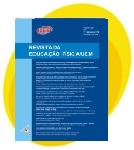<b>Simple reaction time applied for selecting young talents in tennis</b> - doi: 10.4025/reveducfis.v23i3.16990
Abstract
The present study aimed at presenting the importance of simple reaction times, both cognitive and motor, in selecting potential talents in tennis players. Two hundred and forty young people participated in the study, from six to thirteen years old, of both sexes. The volunteers were subjected and approved during the first phase of the study, with a skill test specific for the modality (ITN). In the second phase, a test of simple reaction time was applied, stratifying the results by cognitive and motor time. It was used the ANCOVA test in order to identify differences for ITN, assuming the reaction time as an independent variable and the age as a covariate. Results show differences for ITN among the groups of cognitive reaction time adjusted for age (p=0,04) and there was no difference by observing the comparison among the results of motor reaction time (p=0,162). It is concluded that the cognitive reaction time is an important variable in the process for identifying talents in tennis.
Downloads
Metrics
• Authors retain the copyright and full publishing rights without restrictions.

This work is licensed under a Creative Commons Attribution 4.0 International License.









_1502.jpg)











